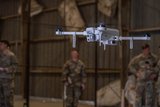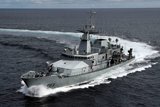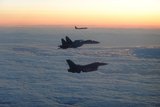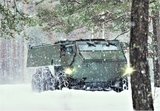US Army assesses Bodkin non-contact IR thermometry
Bodkin Design and Engineering (BD&E) have recently released a new non-contact IR thermometry device to help identify individuals with a raised temperature.
The BD&E Thermal Reference device, now under evaluation by the US Army, uses IR cameras to produce thermal images of a populated scene which enables the user to spot fevered individuals.
A stockpile of thermal imagers is already held by the US Army which would be able to convert them into thermometers using the BD&E device. The thermal imagers are normally used by the military for vision during night operations.
Alongside the army, the New York City Transit Authority is also considering the device for use at rail stations across the city to monitor passengers for COVID-19 coronavirus symptoms.
More from Defence Notes
-
![Why the NORAD inventory might be the US and Canada’s Achilles’ heel]()
Why the NORAD inventory might be the US and Canada’s Achilles’ heel
Both the US and Canada operate Cold War-era capabilities which cannot defeat today’s and tomorrow’s threats.
-
![Companies’ results boom as countries dig deep to buy missiles and air defence systems]()
Companies’ results boom as countries dig deep to buy missiles and air defence systems
Air defence systems are continuing to appear top of countries’ shopping lists but broadly across different capabilities it is a sellers’ market, as demonstrated by backlogs and double-digit percentage point growth.
-
![Forging strong partnerships for warfighting communications in space (Studio)]()
Forging strong partnerships for warfighting communications in space (Studio)
Mike Moran, Director of US Government Business at Amazon Project Kuiper Government Solutions, highlighted the evolution of space as a critical warfighting domain at the Defence in Space Conference (DISC) 2025, held this week in London.






















